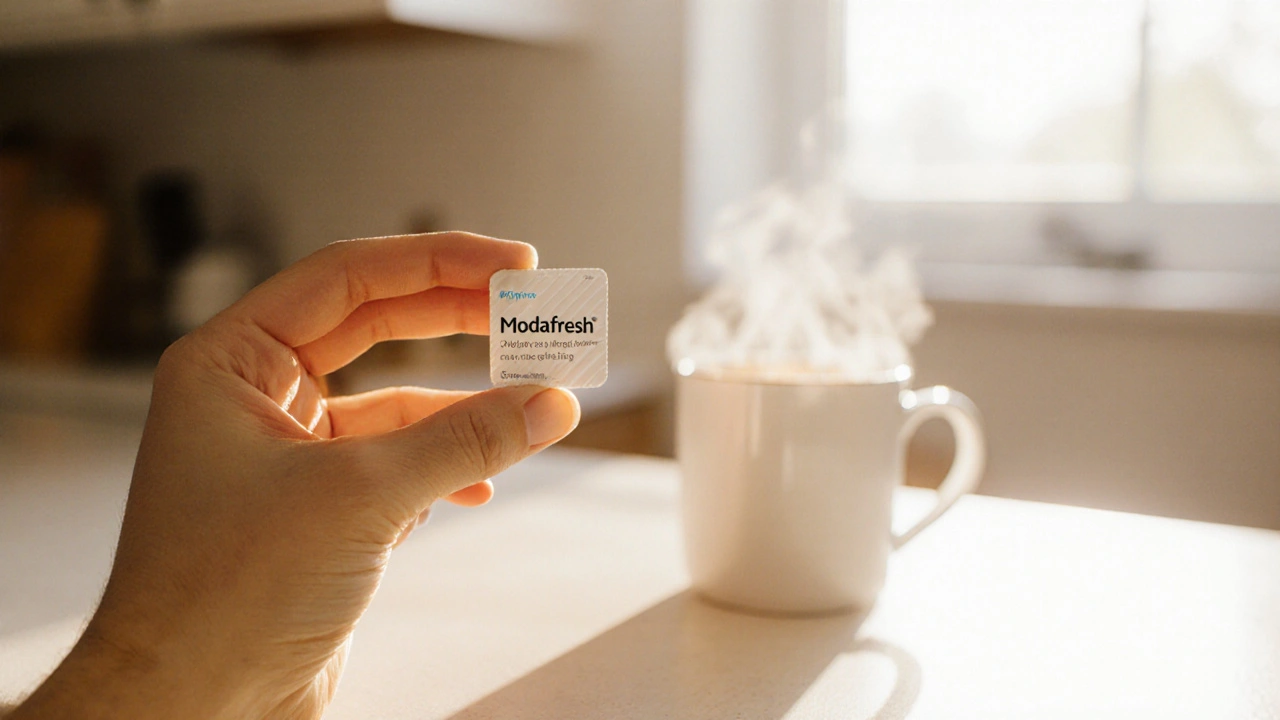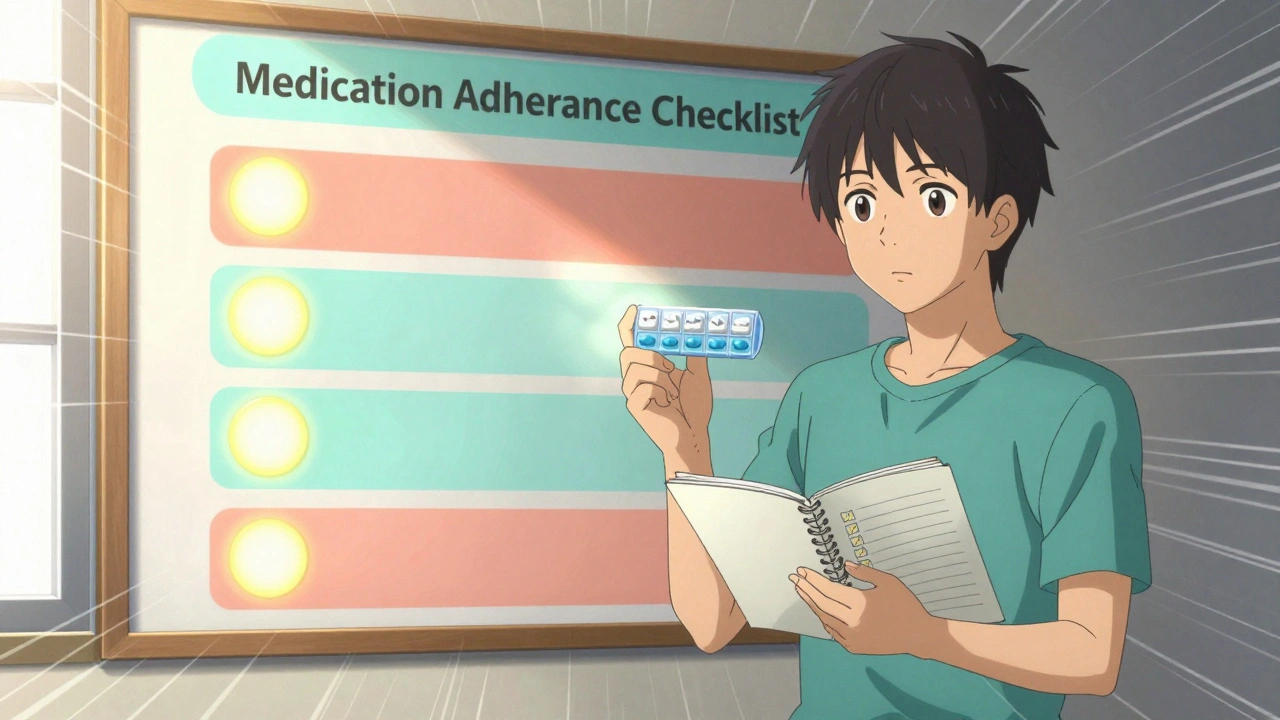Modafinil Alternatives: Your Guide to Safer Wake‑Promoting Choices
When exploring Modafinil alternatives, compounds or substances that aim to boost alertness and mental clarity without using the original prescription drug. Also known as wake‑promoting substitutes, they attract students, shift workers, and anyone looking for a legal edge. This page breaks down the most common options, what makes each unique, and how they fit into everyday life.
Key Players in the Wake‑Boosting Landscape
Armodafinil, a close chemical sibling of Modafinil with a longer half‑life, often marketed under brand names like Nuvigil. Its alternate name is R-modafinil offers a smoother wear‑off, which many users prefer for overnight shifts. Adrafinil, a pro‑drug that the body converts into Modafinil once ingested. Known also as Olmifon, it can be bought over the counter in some regions, letting users avoid a prescription. Caffeine‑based nootropics, formulations that pair caffeine with L‑theanine or other milder stimulants. These combinations are often called smart‑caffeine blends and provide a gentler lift.
These three entities illustrate a broader principle: Modafinil alternatives encompass both pharmaceutical derivatives and natural compounds. The first two—Armodafinil and Adrafinil—share the same mechanism of action (enhancing dopamine signaling) but differ in metabolism and legal status. The third, caffeine‑based blends, works by blocking adenosine receptors, a completely separate pathway that still yields alertness. Understanding these mechanisms helps users pick the right tool for their schedule and tolerance.
Another important factor is availability. Armodafinil usually requires a prescription in most countries, though some online pharmacies offer verified options. Adrafinil sidesteps the prescription hurdle but can strain the liver if taken daily at high doses. Caffeine blends are widely sold in health stores and online, making them the most accessible. Availability directly influences how often people can experiment safely, which is why many start with caffeine blends before moving to a stronger agent.
Safety profiles also vary. Armodafinil’s side‑effects—headache, dry mouth, occasional insomnia—mirror Modafinil’s but tend to be milder for most. Adrafinil adds liver‑enzyme elevation to the list, so periodic blood tests are advised for long‑term users. Caffeine‑L‑theanine mixes generally cause fewer severe reactions, though excess caffeine can trigger jitteriness or heart palpitations. By mapping each alternative’s risks, readers can match a substance to their health baseline.
Cost is another real‑world consideration. Armodafinil typically costs 30‑50% more than Modafinil per milligram because of brand‑specific pricing. Adrafinil is cheaper per dose but may require larger quantities to achieve the same effect, which can offset the price advantage. Caffeine‑based products range from a few dollars for a bottle of powder to premium branded stacks at higher prices. Budget‑conscious users often weigh these numbers against how frequently they need the boost.
Legal status shapes both cost and safety. In the United States, Armodafinil is Schedule IV, meaning a doctor’s script is mandatory. Adrafinil sits in a gray area—legal to buy, but still unapproved for medical use. Caffeine blends face no prescription barriers, but some countries restrict high‑dose caffeine supplements. Knowing the legal landscape prevents accidental violations and helps users choose a path that aligns with their region’s regulations.
When it comes to dosing, the three groups follow distinct guidelines. Armodafinil is usually prescribed at 150 mg once daily, occasionally split into 75 mg twice for extended coverage. Adrafinil users start at 300 mg in the morning, adjusting upward in 100 mg increments while monitoring liver function. Caffeine‑L‑theanine stacks often recommend 100 mg of caffeine paired with 200 mg of L‑theanine, taken 30 minutes before a demanding task. Proper dosing minimizes side‑effects and maximizes the desired alertness.
Many people wonder how these alternatives stack up for specific use‑cases. Night‑shift workers often favor Armodafinil for its longer duration, reducing the need for a mid‑night pill. Students pulling all‑nighters may lean toward Adrafinil because they can buy it without a script and titrate dose last‑minute. Athletes seeking a mild focus boost without risking a banned‑substance violation typically choose caffeine‑L‑theanine blends. Matching the agent to the scenario yields better outcomes and fewer regrets.
Finally, lifestyle integration matters. Whichever alternative you pick, pairing it with regular sleep hygiene, hydration, and balanced nutrition enhances the effect. Skipping meals or staying dehydrated can amplify jitters from caffeine or cause headaches with Armodafinil. Simple habits—like a 30‑minute wind‑down routine and a glass of water with each dose—turn a wake‑promoting pill into a sustainable tool rather than a crash‑course.
Below you’ll find a curated list of articles that dive deeper into each of these alternatives, compare them head‑to‑head, and share real‑world buying tips. Whether you’re looking for a prescription‑only power boost or a naturally sourced wake‑up call, the posts ahead give you practical insights to make an informed choice.
Modafresh vs. Other Wake‑Promoting Drugs: A Detailed Comparison
A thorough comparison of Modafresh with modafinil, armodafinil, adrafinil, stimulants, and OTC options, covering effects, safety, cost, and choosing the right wake‑up aid.






